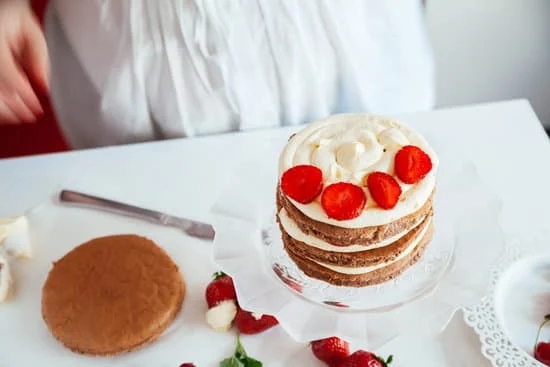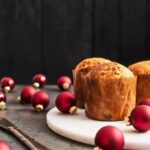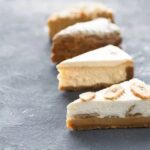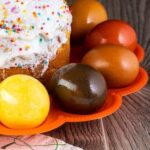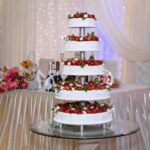When it comes to creating a visually appealing and delicious cake, one of the key elements is the decorations. Whether you are a professional baker or someone who enjoys baking as a hobby, knowing what do you decorate a cake with can make all the difference in the final product. From simple designs to intricate patterns, cake decoration can elevate the overall look and feel of your creation.
Cake decorations come in various forms, such as fondant, buttercream, royal icing, and more. Each type offers a unique texture and finish that can transform a plain cake into a work of art. The choice of decoration depends on the design you want to achieve and the taste preferences of your audience. Understanding the different types of cake decorations available allows you to experiment and create stunning cakes for any occasion.
To successfully decorate a cake, it is essential to have the right tools at your disposal. Piping bags, nozzles, spatulas, and other tools play a crucial role in creating intricate designs and smooth finishes. These tools help you control the application of decorations with precision, resulting in professional-looking cakes that are sure to impress. Additionally, having quality tools ensures efficiency and consistency in your decorating process.
Types of Cake Decorations
Cake decoration is an essential aspect of baking that allows for creativity and personalization. One of the most common questions in the realm of cake decorating is, “What do you decorate a cake with?” The answer to this question varies depending on the desired outcome, theme, and taste preferences. In this section, we will explore different types of cake decorations that are popular among bakers and pastry enthusiasts.
Fondant is a versatile and pliable icing that can be rolled out to cover cakes smoothly or molded into various shapes and designs. It gives cakes a smooth finish and allows for intricate details to be added easily.
Buttercream, on the other hand, is a creamy frosting that can be spread or piped onto cakes for a soft and fluffy texture. Royal icing is another popular choice for intricate decorations such as lace patterns, flowers, or writing on cakes due to its ability to harden when dried.
When decorating a cake, essential tools play a crucial role in achieving professional-looking results. Piping bags are indispensable for creating decorative borders, writing messages, or adding intricate details with precision. Nozzles come in various shapes and sizes to create different patterns and textures on cakes.
Spatulas are used for spreading frosting smoothly or creating textured finishes like swirls or peaks on cakes. These tools provide bakers with the versatility needed to bring their creative visions to life when decorating cakes.
| Types of Cake Decorations | Examples |
|---|---|
| Fondant | Rolled fondant for covering cakes smoothly |
| Buttercream | Creamy frosting for spreading or piping onto cakes |
| Royal Icing | Icing that hardens when dried for intricate designs |
Essential Tools for Decorating Cakes
When it comes to decorating a cake, having the right tools is essential in achieving beautiful and professional-looking designs. Piping bags are one of the most important tools for cake decoration, allowing for precision when applying frosting or icing onto the cake. There are different types of piping bags available, including reusable silicone bags and disposable plastic bags, depending on personal preference and usage frequency.
Nozzles play a crucial role in creating various designs and patterns on the cake. From simple round tips for writing messages to intricate star tips for creating borders and rosettes, having a variety of nozzles in your collection can elevate your cake decorating skills. It is recommended to experiment with different nozzle sizes and shapes to discover unique designs that suit your style.
Spatulas are another essential tool for decorating cakes, particularly when it comes to applying a smooth layer of frosting or icing on the cake’s surface. Offset spatulas are commonly used for spreading and smoothing out icing, while straight spatulas are ideal for lifting decorations and transferring them onto the cake.
Having a set of high-quality spatulas in different sizes can make the decorating process more efficient and enjoyable. Remember, having the right tools not only enhances the quality of your decorations but also makes the entire process more manageable and enjoyable.
Edible Decorations
Decorating a cake is not just about making it visually appealing, but also about adding flavor and texture to the overall experience. Edible decorations play a crucial role in enhancing the aesthetic appeal of a cake while offering a burst of flavors and freshness. So, what do you decorate a cake with when it comes to edible decorations? Let’s explore some delicious options that can elevate your next baking creation.
Fresh Fruit
Fresh fruit is a classic choice for decorating cakes as it not only adds vibrant colors but also a juicy sweetness that complements different cake flavors. From strawberries and blueberries to kiwi slices and mango chunks, the possibilities are endless.
When using fresh fruit as decorations, make sure to slice them evenly for a uniform look and arrange them creatively on top of your cake. Not only does fresh fruit look beautiful on cakes, but it also provides a refreshing contrast to the rich buttercream or fondant.
Edible Flowers
Adding edible flowers to your cake decorations can take your baking creation to the next level. Flowers like roses, pansies, violets, and lavender can be used to create stunning floral arrangements on cakes. However, it’s essential to ensure that you are using edible flowers that have not been treated with pesticides. Edible flowers not only add elegance and sophistication to your cakes but also introduce unique fragrances and flavors that can surprise and delight your taste buds.
Sprinkles
Sprinkles are a fun and easy way to decorate cakes, adding pops of color and texture effortlessly. Whether you opt for traditional rainbow sprinkles or themed shapes such as stars, hearts, or even shimmering metallic dragees, sprinkles can make your cake stand out from the rest.
Sprinkles are versatile decorations that can be used in various ways – from creating borders around the edges of your cake layers to covering the entire surface for a festive look. Experiment with different types of sprinkles to add personality and whimsy to your baked creations.
Incorporating fresh fruit, edible flowers, and sprinkles into your cake decorations can not only enhance the visual appeal of your baking masterpiece but also introduce exciting new flavors and textures. Get creative with how you use these edible decorations on your cakes and let your imagination run wild.
Non-Edible Decorations
When it comes to decorating a cake, there are various non-edible decorations that can add an extra layer of creativity and personalization to your baked creation. One popular choice for adding flair to cakes is using cake toppers. These can range from simple plastic figurines to intricate handmade designs. Cake toppers are a great way to customize your cake for any occasion, whether it’s a birthday, wedding, or baby shower.
In addition to cake toppers, ribbons are another versatile decoration that can be used to elevate the look of a cake. Whether you opt for a simple satin ribbon or a more elaborate patterned design, ribbons can add elegance and charm to any cake. They are easy to work with and come in a variety of colors and textures, making them suitable for any theme or style.
Lastly, confetti is a fun and festive way to decorate cakes for celebrations. Edible confetti made of sugar adds a playful touch to the presentation of cakes and can be easily sprinkled on top or around the edges. Non-edible confetti made of paper or metallic materials can also be used sparingly as accents on cakes for special occasions. Whichever non-edible decorations you choose, they can help you achieve the desired look and feel for your cake masterpiece.
| Non-Edible Decoration | Usage |
|---|---|
| Cake Toppers | Adds customization and personalization for various occasions |
| Ribbons | Brings elegance and charm with different colors and textures |
| Confetti | Offers a fun and festive touch as edible or non-edible accents |
Tips for Achieving Beautiful Cake Decorations
Achieving beautiful cake decorations involves a combination of creativity, skill, and attention to detail. One of the key elements to consider when decorating a cake is color coordination. By selecting a color palette that complements each other, you can create a visually appealing design that will wow your guests. Whether you choose monochromatic hues for an elegant look or vibrant colors for a fun celebration, experimenting with different shades can elevate the overall look of your cake.
In addition to color coordination, texture contrast plays a significant role in creating visually striking cake decorations. Using different textures such as smooth buttercream, glossy ganache, or crunchy sprinkles can add depth and dimension to your design. Incorporating various textures not only enhances the visual appeal but also creates a sensory experience for anyone enjoying the cake.
Symmetry is another important aspect to consider when decorating cakes. Ensuring that your decorations are evenly distributed and balanced on the cake can help create a more polished and professional-looking design. Whether you are piping intricate patterns or arranging edible flowers, maintaining symmetry throughout the cake will result in a harmonious and aesthetically pleasing presentation.
- Experiment with different color palettes
- Utilize various textures to create depth
- Ensure symmetry in your decorations
Common Mistakes to Avoid When Decorating Cakes
When it comes to decorating a cake, there are certain common mistakes that may often occur, but can easily be avoided with a little bit of attention to detail. Here are some key points to keep in mind to ensure that your cake decorations turn out beautifully every time:
- Over Mixing: When preparing buttercream or other icing, over mixing can lead to a runny consistency that is difficult to work with. Be sure to mix your icing just until smooth and combined, as over mixing can result in a lack of structure for piping.
- Inadequate Preparation: Not properly preparing your cake layers before decorating can lead to uneven surfaces. Leveling your cakes, applying a crumb coat, and chilling them before adding the final layer of frosting will help create a smooth canvas for decorating.
- Rushing the Process: Patience is key when it comes to cake decorating. Rushing through the process can lead to smudged designs, uneven borders, or collapsed layers. Take your time and focus on each step carefully for the best results.
By paying attention to these common mistakes and taking the necessary precautions, you can avoid potential mishaps and confidently create stunning cake decorations that will impress your guests. Remember, practice makes perfect, so don’t be discouraged if you encounter challenges along the way. With experience and the right techniques, you’ll soon be decorating cakes like a pro.
Additionally, seeking inspiration from tutorials, online resources, and experienced bakers can also help you improve your cake decorating skills. Don’t hesitate to try new techniques and experiment with different tools and ingredients to discover what works best for you. With dedication and creativity, you’ll be able to elevate your cake decorations beyond expectations and showcase your artistic flair for all occasions.
Creative Cake Decorating Ideas
When it comes to decorating a cake, the possibilities are endless. One popular trend in cake decoration is the watercolor effect. This technique involves blending different shades of edible food coloring to create a beautiful watercolor-like design on the cake.
The result is a stunning and artistic finish that can elevate any plain cake to a work of art. To achieve this effect, simply dilute your food coloring with a bit of water or alcohol and use a paintbrush to apply it onto the cake in fluid motions.
Another creative idea for decorating cakes is to incorporate geometric designs. Geometric shapes like triangles, circles, and squares can add a modern and stylish touch to any cake. You can use fondant cutters or stencils to create precise shapes on the cake’s surface, or even try piping geometric patterns using buttercream or royal icing. This trend is perfect for those looking for a contemporary and eye-catching design for their cakes.
If you’re looking for a more subtle yet striking decoration idea, consider trying the ombre effect. Ombre involves blending different shades of the same color gradually from light to dark, creating a gradient effect on the cake. This technique works well with buttercream frosting as it allows you to smoothly transition between colors by simply changing the intensity of your food coloring. The ombre effect adds depth and dimension to your cake, making it visually appealing and sophisticated.
Conclusion
In conclusion, the art of cake decoration is a crucial aspect of baking that not only enhances the visual appeal of a cake but also adds a personal touch to special occasions. Whether it’s a birthday, wedding, or any other celebration, decorating a cake can make it truly memorable. From fondant to buttercream to royal icing, there are various types of decorations that can be used to create stunning designs on cakes.
When it comes to decorating cakes, having the essential tools such as piping bags, nozzles, and spatulas is key to achieving professional-looking results. Additionally, incorporating edible decorations like fresh fruit, edible flowers, and sprinkles can add both flavor and visual interest to a cake. But let’s not forget about non-edible decorations such as cake toppers, ribbons, and confetti, which can further elevate the overall presentation of a cake.
To ensure beautiful cake decorations, it is important to pay attention to details such as color coordination, texture contrast, and symmetry. By avoiding common mistakes like overmixing frosting or rushing the decorating process, you can create cakes that are truly works of art. And with creative ideas like watercolor effects, geometric designs, and ombre effects, the possibilities for cake decoration are endless.
So the next time you ask yourself “what do you decorate a cake with?” remember that with some creativity and practice, you can leave a lasting impression with your beautifully decorated cakes.
Frequently Asked Questions
What Do You Use to Decorate a Cake?
A variety of items can be used to decorate a cake, such as icing, fondant, edible flowers, sprinkles, chocolate shavings, fresh fruit, or decorative toppers. These decorations can add color, texture, and flavor to the cake.
What Can I Top a Cake With Besides Frosting?
Besides frosting, cakes can be topped with various options to enhance their appearance and taste. Examples include whipped cream, ganache, glaze, fruit preserves, caramel sauce, nuts, flavored syrups, edible glitter or pearls. Each option offers a unique touch to the final presentation.
What Is the Best Icing to Decorate a Cake With?
The best icing for decorating a cake depends on personal preference and the desired effect. Buttercream is popular for its versatility and ability to hold intricate designs. Royal icing is excellent for creating detailed decorations like lines or flowers.
Fondant provides a smooth surface ideal for elaborate designs and sculpting. Ganache offers a rich and glossy finish perfect for elegant cakes. Ultimately, selecting the best icing involves considering factors like taste, style of decoration wanted and skill level in working with different icings.

Welcome to our cake decorating blog! My name is Destiny Flores, and I am the proud owner of a cake decorating business named Cake Karma. Our mission is to provide delicious, beautiful cakes for all occasions. We specialize in creating custom cakes that are tailored specifically to each customer’s individual needs and tastes.

